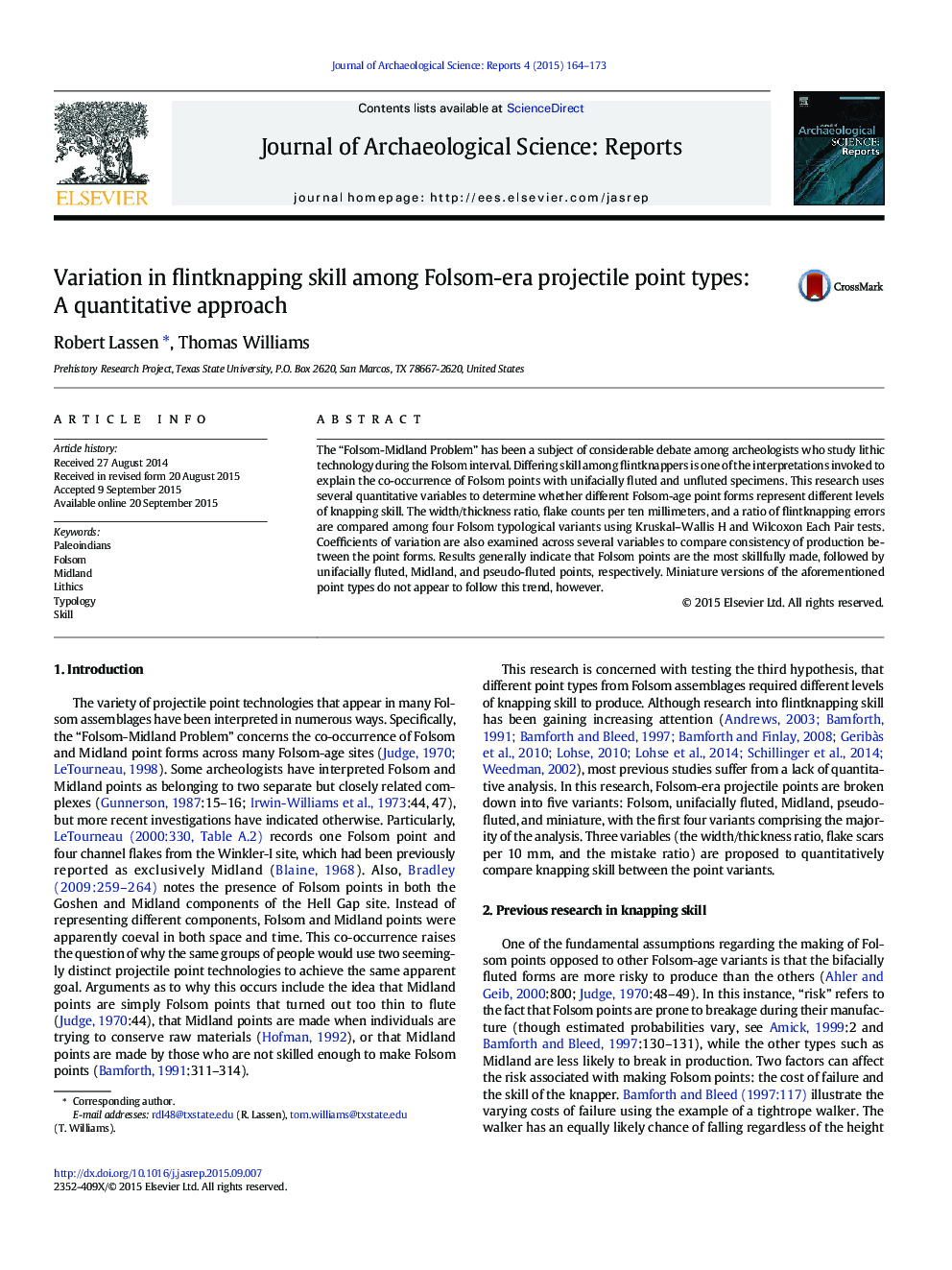| Article ID | Journal | Published Year | Pages | File Type |
|---|---|---|---|---|
| 7446007 | Journal of Archaeological Science: Reports | 2015 | 10 Pages |
Abstract
The “Folsom-Midland Problem” has been a subject of considerable debate among archeologists who study lithic technology during the Folsom interval. Differing skill among flintknappers is one of the interpretations invoked to explain the co-occurrence of Folsom points with unifacially fluted and unfluted specimens. This research uses several quantitative variables to determine whether different Folsom-age point forms represent different levels of knapping skill. The width/thickness ratio, flake counts per ten millimeters, and a ratio of flintknapping errors are compared among four Folsom typological variants using Kruskal-Wallis H and Wilcoxon Each Pair tests. Coefficients of variation are also examined across several variables to compare consistency of production between the point forms. Results generally indicate that Folsom points are the most skillfully made, followed by unifacially fluted, Midland, and pseudo-fluted points, respectively. Miniature versions of the aforementioned point types do not appear to follow this trend, however.
Related Topics
Social Sciences and Humanities
Arts and Humanities
History
Authors
Robert Lassen, Thomas Williams,
